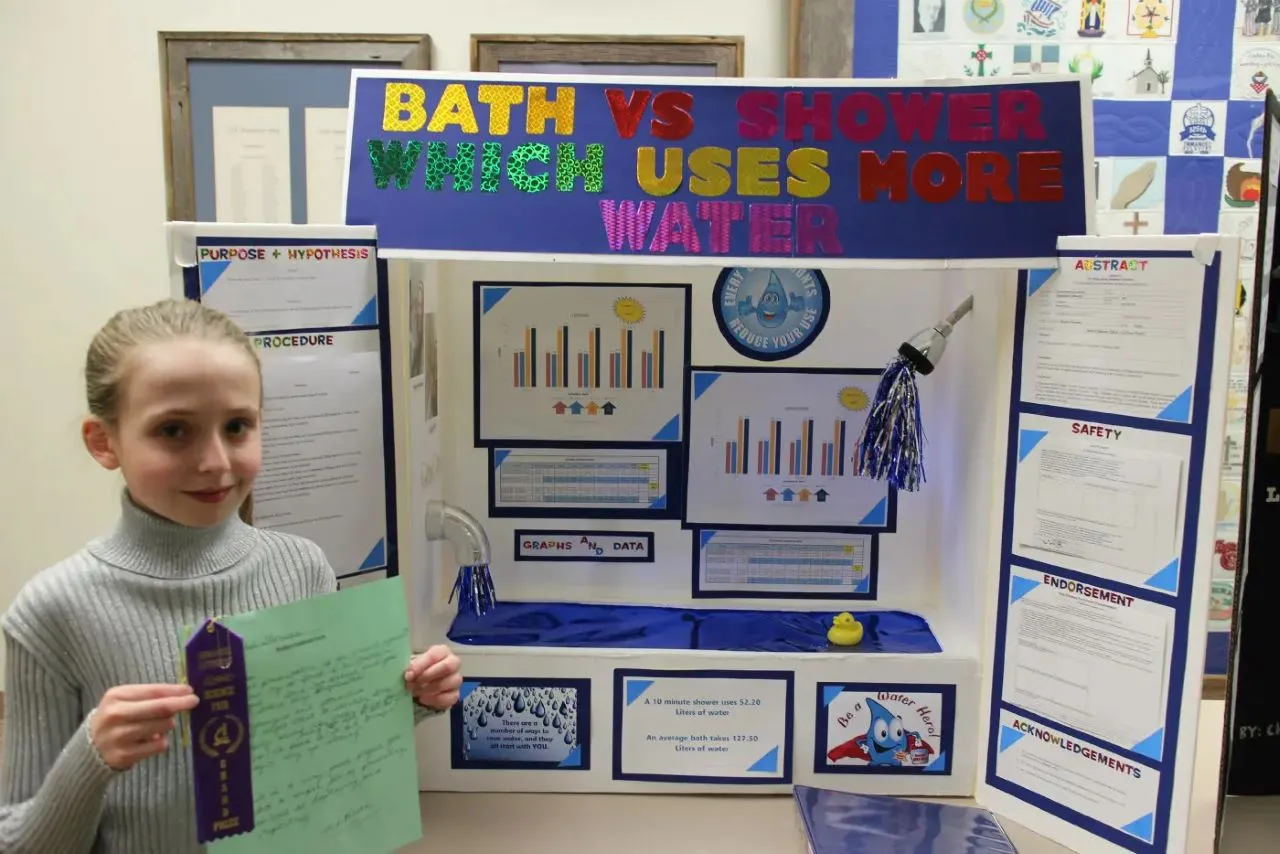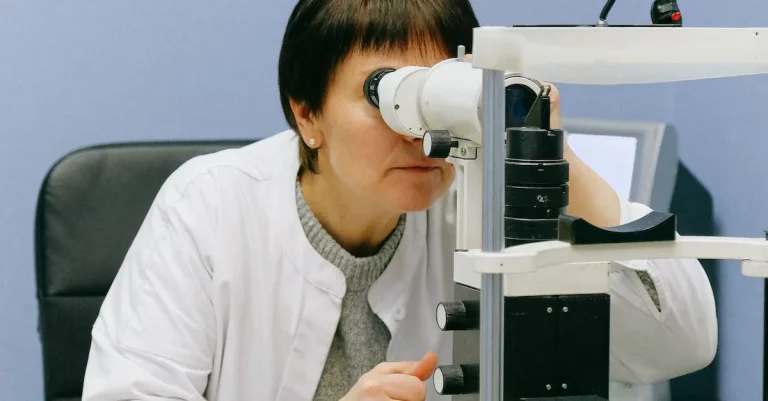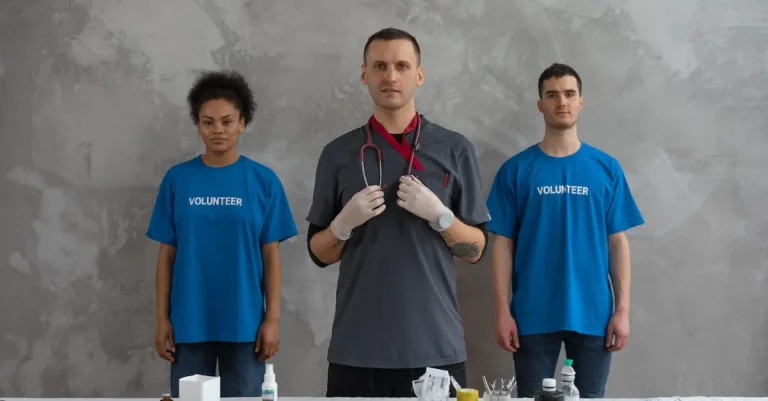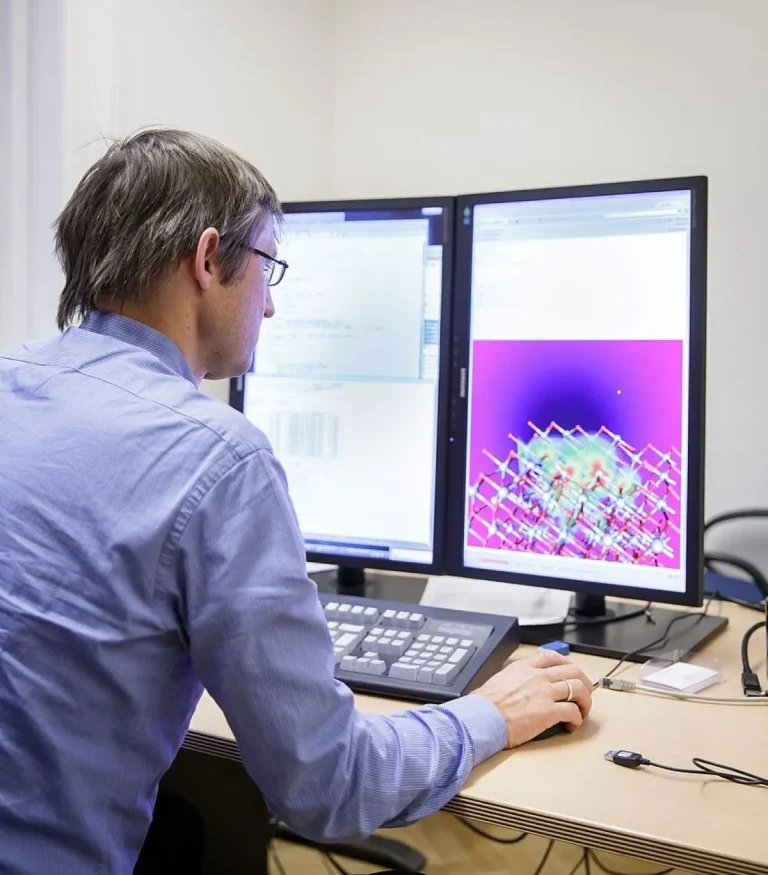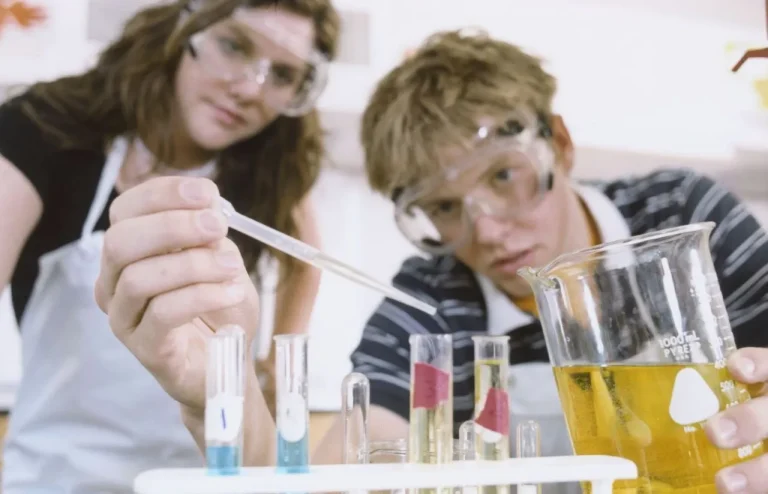Best Science Fair Project Ideas For 10Th Graders
Science fairs are an exciting opportunity for 10th grade students to demonstrate scientific thought, knowledge, and creativity. Coming up with an interesting idea that fits your skills and available resources can be the hardest part.
If you’re short on time, here’s a quick answer for great 10th grade science fair ideas: Test an original hypothesis by experimentally investigating physics concepts like motion and energy, chemically analyzing everyday products, or using data science to study health, social or environmental topics.
In this comprehensive guide, we provide dozens of great science fair project ideas for 10th graders in physics, chemistry, biology, data science, and more. We’ll also discuss important factors in choosing a project, conducting strong experiments, analyzing data effectively, and putting together an eye-catching display.
Physics Science Projects
Motion and Speed Experiments
One fascinating area of physics to explore for 10th-grade science fair projects is motion and speed. Students can design experiments to investigate various aspects of motion, such as acceleration, velocity, and forces.
For example, they can create a simple ramp and measure the time it takes for different objects to roll down and reach the bottom. They can also explore how different variables, like the angle of the ramp or the surface material, affect the speed of an object.
These experiments not only allow students to understand the fundamental principles of motion but also encourage them to apply their knowledge to real-world scenarios.
Thermodynamics and Heat Transfer
Thermodynamics and heat transfer are essential concepts in physics, and they offer numerous project possibilities for 10th-grade students. An interesting experiment could involve investigating the relationship between temperature and the rate of heat transfer.
Students can set up different containers of water at various temperatures and measure how quickly they cool down. They can also explore how different materials, such as metals or insulators, affect heat transfer.
This project not only helps students understand the principles of thermodynamics but also allows them to apply their knowledge to everyday situations, like insulation in homes or energy-efficient appliances.
Sound, Light, and Electromagnetism
The fields of sound, light, and electromagnetism provide excellent opportunities for 10th-grade students to explore physics concepts through hands-on experiments. Students can design projects to investigate the properties of sound waves, such as frequency and amplitude.
They can also explore the behavior of light, including reflection, refraction, and the formation of shadows. Additionally, students can delve into electromagnetism by building simple circuits or investigating the relationship between electric current and magnetic fields.
These projects not only deepen students’ understanding of these phenomena but also spark their curiosity about the applications of physics in various technologies, such as speakers, lenses, and electric motors.
Chemistry Science Projects
Analyzing Chemical Properties
One exciting area for chemistry science fair projects is analyzing chemical properties. Students can explore various substances and investigate their chemical composition, reactions, and properties. This can be done by conducting experiments such as testing the pH levels of different household liquids, investigating the effects of temperature on the rate of a chemical reaction, or examining the factors that affect the solubility of substances.
These projects not only provide hands-on experience but also enhance students’ understanding of chemical principles.
Food Chemistry Experiments
Food chemistry experiments make for fascinating science fair projects. Students can explore the chemical processes that occur during cooking, baking, or food preservation. They can investigate how different ingredients interact and affect the taste, texture, or color of food.
For example, a student could study the effects of pH on the coagulation of proteins in dairy products or analyze the oxidation of fruits and vegetables. These projects not only involve chemistry but also have practical applications in the kitchen.
Product Testing and Extraction
Another area of chemistry that offers great project ideas for 10th graders is product testing and extraction. Students can evaluate the chemical components of various consumer products, such as cleaning agents or personal care items.
They can analyze the effectiveness of different ingredients and compare the performance of commercial products. For instance, a student could test the pH of different brands of toothpaste or investigate the chemical properties of natural vs. synthetic dyes.
These projects allow students to apply their knowledge of chemistry to real-world scenarios.
Earth and Environmental Science Projects
Water Conservation and Quality
Water conservation is a critical issue in today’s world, and there are several science fair project ideas that can help students understand the importance of preserving this precious resource. For example, one project idea could involve testing the water quality of different sources, such as tap water, bottled water, and rainwater, to determine which is the safest and most suitable for consumption.
Another project idea could focus on investigating ways to reduce water usage in everyday activities, like showering or watering plants.
Additionally, students could explore the impact of pollution on water quality by conducting experiments to test the effectiveness of different water filtration methods. This project could involve comparing the efficiency of various filtration systems, such as activated charcoal filters or UV light treatment, in removing contaminants from water.
For more information on water conservation and quality, visit https://www.epa.gov/water-research.
Renewable Energy
Renewable energy sources, such as solar and wind power, are becoming increasingly important in our efforts to combat climate change. Students can explore various aspects of renewable energy for their science fair projects.
One idea could be to build and test a small-scale solar panel or wind turbine to determine its efficiency in generating electricity. They could also investigate ways to optimize the performance of these devices by modifying factors such as the angle or position of the solar panel or the design of the wind turbine blades.
Another interesting project idea could involve comparing the energy output of different renewable energy sources. Students could research and construct models to demonstrate the energy production of solar, wind, hydroelectric, and geothermal power systems.
They could then analyze the data and draw conclusions about the most effective and sustainable sources of renewable energy.
For more information on renewable energy, visit https://www.energy.gov/eere/renewables.
Pollution and Recycling Studies
Pollution and recycling are critical environmental issues that can be explored through science fair projects. Students can investigate the impact of different types of pollution on the environment and living organisms.
They could conduct experiments to study the effects of air pollution on plant growth or the impact of water pollution on aquatic life. They could also explore ways to mitigate pollution, such as by experimenting with natural or technological solutions.
Recycling is another important topic that can be studied in science fair projects. Students can explore the effectiveness of different recycling methods, such as composting, plastic recycling, or paper recycling.
They could investigate factors that affect recycling rates, such as public awareness or access to recycling facilities, and propose strategies to increase recycling efforts in their communities.
For more information on pollution and recycling, visit https://www.epa.gov/pollution-prevention.
Biology, Health and Behavior Science Projects
Human Body, Senses and Psychology
Exploring the human body, senses, and psychology can be an exciting area for science fair projects. One interesting project idea is to investigate the effects of music on concentration. Students can design an experiment to test whether listening to different genres of music affects focus and productivity.
They can gather data by measuring participants’ performance on cognitive tasks while listening to different types of music. This project can provide valuable insights into the relationship between music and cognitive abilities.
Another intriguing project idea is to study the impact of color on mood and emotions. Students can design an experiment to determine whether different colors elicit specific emotional responses. They can collect data by conducting surveys or using biometric sensors to measure physiological changes associated with emotions.
This project can contribute to our understanding of how color influences human behavior and well-being.
Plant Growth and Ecosystems
Exploring plant growth and ecosystems is another captivating area for science fair projects. A project idea could involve investigating the effects of different types of fertilizers on plant growth. Students can set up an experiment with different fertilizers and measure the height, leaf size, and overall health of the plants over a specific period.
This project can provide insights into the best practices for promoting plant growth and maintaining healthy ecosystems.
Another fascinating project idea is to study the impact of light intensity on photosynthesis. Students can design an experiment to determine how varying levels of light affect the rate of photosynthesis in plants.
They can measure the oxygen production or the growth of the plants as indicators of photosynthetic activity. This project can contribute to our understanding of the factors that influence plant growth and the role of photosynthesis in ecosystems.
Data Science for Health Trends
Data science is an emerging field that can be utilized for science fair projects related to health trends. One project idea is to analyze public health data to identify patterns and trends in the occurrence of diseases.
Students can use available datasets from reputable sources such as the World Health Organization or the Centers for Disease Control and Prevention. By applying data analysis techniques, they can uncover valuable insights that can inform public health interventions and strategies.
Another compelling project idea is to develop a predictive model for disease outbreaks. Students can use historical data on disease outbreaks and relevant environmental factors to train a machine learning algorithm.
This model can then be used to predict the likelihood of future outbreaks based on current environmental conditions. This project combines the fields of data science and epidemiology, providing an opportunity to contribute to the prevention and management of diseases.
Choosing and Conducting Your Project
Select an Original Idea
When choosing a science fair project idea, it is important for 10th graders to select an original concept that piques their interest. One way to do this is by brainstorming topics that align with their personal hobbies or areas of curiosity.
For example, if a student enjoys gardening, they could explore the effects of different fertilizers on plant growth. Alternatively, if they have a passion for technology, they could investigate the efficiency of different coding languages. The key is to select a project that is unique and engaging.
Write a Strong Hypothesis
Once a topic has been chosen, it is crucial to develop a strong hypothesis. A hypothesis is an educated guess or prediction about the outcome of an experiment. It should be specific, testable, and based on prior knowledge or research.
For instance, if the chosen topic is the effect of music on concentration, a strong hypothesis could be: “If students listen to classical music while studying, then their test scores will improve compared to those who study in silence.”
Writing a clear and concise hypothesis sets the foundation for a successful science fair project.
Follow the Scientific Method
When conducting a science fair project, it is essential to follow the scientific method. This systematic approach helps ensure valid and reliable results. The scientific method typically consists of the following steps:
- Ask a Question: Identify a problem or question that you want to investigate.
- Do Background Research: Gather information about your topic to develop a better understanding.
- Construct a Hypothesis: Formulate an educated guess about the outcome of your experiment.
- Test Your Hypothesis: Design and conduct an experiment to test your hypothesis.
- Analyze Your Data: Collect and analyze the data obtained from your experiment.
- Draw Conclusions: Make conclusions based on your analysis and determine if your hypothesis was supported.
- Communicate Your Results: Share your findings through a well-written report or presentation.
By following these steps, 10th graders can ensure that their science fair projects are conducted in a structured and scientific manner, increasing the chances of success.
For more information on choosing and conducting science fair projects, you can visit www.sciencebuddies.org.
Analyzing Data and Creating Your Display
Statistical Analysis of Results
Once you have conducted your science experiment, it’s important to analyze the data you have collected. Statistical analysis helps you make sense of the numbers and draw meaningful conclusions. You can use various statistical methods to analyze your data, such as calculating averages, standard deviations, and correlations.
This will allow you to identify patterns, trends, and relationships within your data, providing a solid foundation for your project.
For more guidance on statistical analysis, you can refer to resources like Khan Academy or Statistics How To. These websites offer comprehensive explanations and step-by-step tutorials on various statistical concepts and techniques.
Effective Data Visualizations
Presenting your data in a visually appealing way is crucial to engage your audience and effectively communicate your findings. Creating clear and informative data visualizations can help your viewers grasp complex information more easily.
You can use graphs, charts, tables, and diagrams to represent your data visually.
When choosing the right type of visualization, consider the nature of your data and the message you want to convey. Bar graphs are great for comparing different categories, line graphs can show trends over time, and pie charts can illustrate proportions.
Make sure to label your axes, use colors strategically, and keep your visualizations simple and easy to understand.
Putting Together an Eye-catching Presentation
An eye-catching presentation is essential to impress the judges and showcase your hard work effectively. Your presentation should be well-organized, visually appealing, and engaging. Here are some tips to create an outstanding display:
- Clear and concise: Keep your text and explanations concise, focusing on the key points of your project.
- Visual appeal: Use colors, images, and diagrams to make your display visually appealing and attractive.
- Logical flow: Arrange your information in a logical order, guiding the viewer through your project step by step.
- Engaging elements: Incorporate interactive elements, such as videos or demonstrations, to captivate the audience’s attention.
- Practice: Rehearse your presentation multiple times to ensure a smooth delivery and confidence in your content.
Remember, your display is not only a visual representation of your project but also a reflection of your hard work and dedication. Invest time and effort into creating a captivating and professional presentation that will leave a lasting impression on the judges.
Conclusion
From physics to environmental science to data analysis, there are many cool science fair ideas for 10th grade students to choose from. Make sure to pick an original hypothesis you can systematically test and collect meaningful data on.
Analyze your results thoroughly using statistics and represent them visually through charts, graphs and tables. With these science project suggestions and tips, you’re sure to have an impressive and educational science fair experience.

